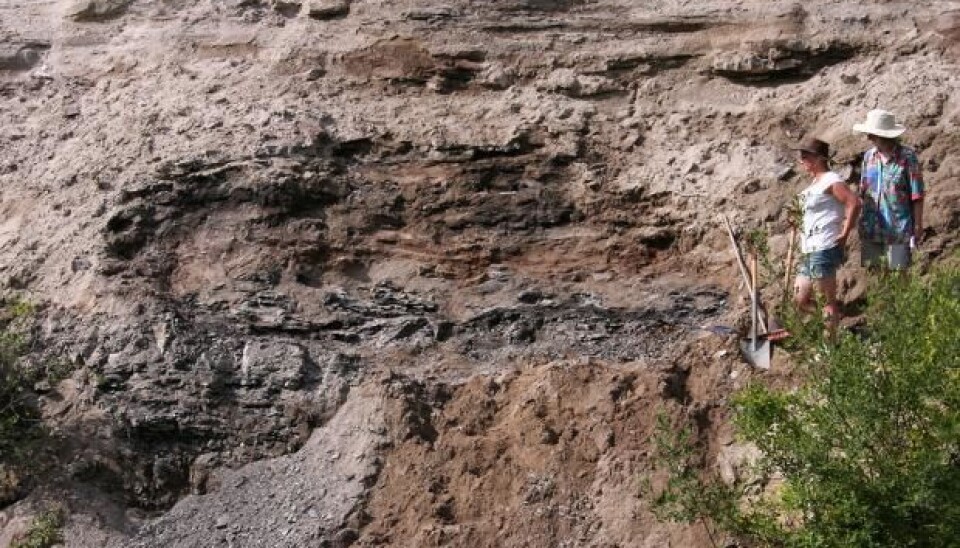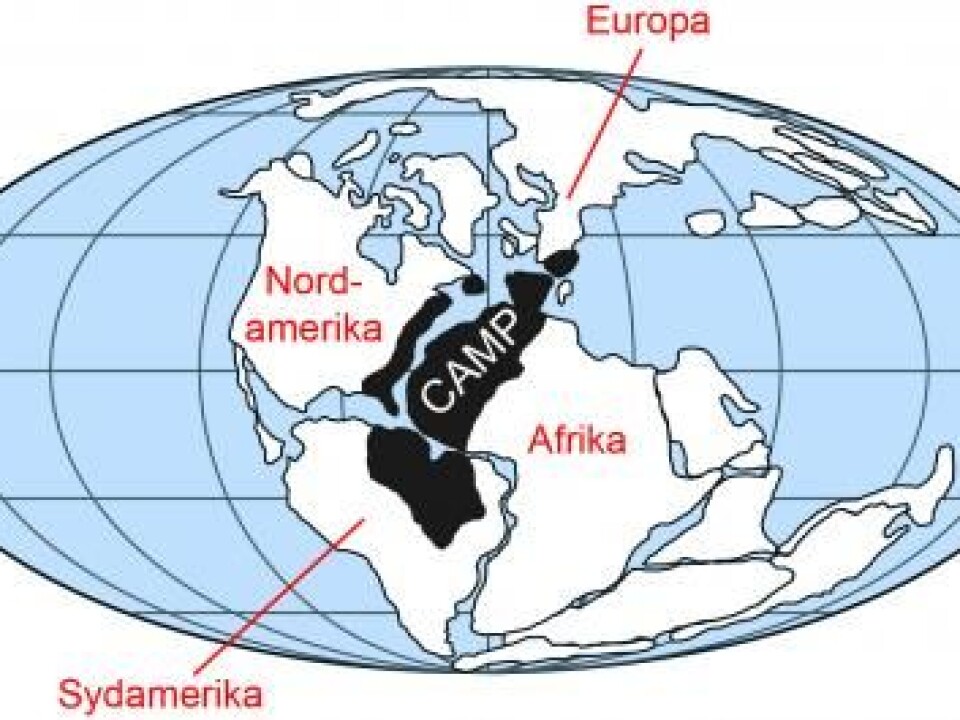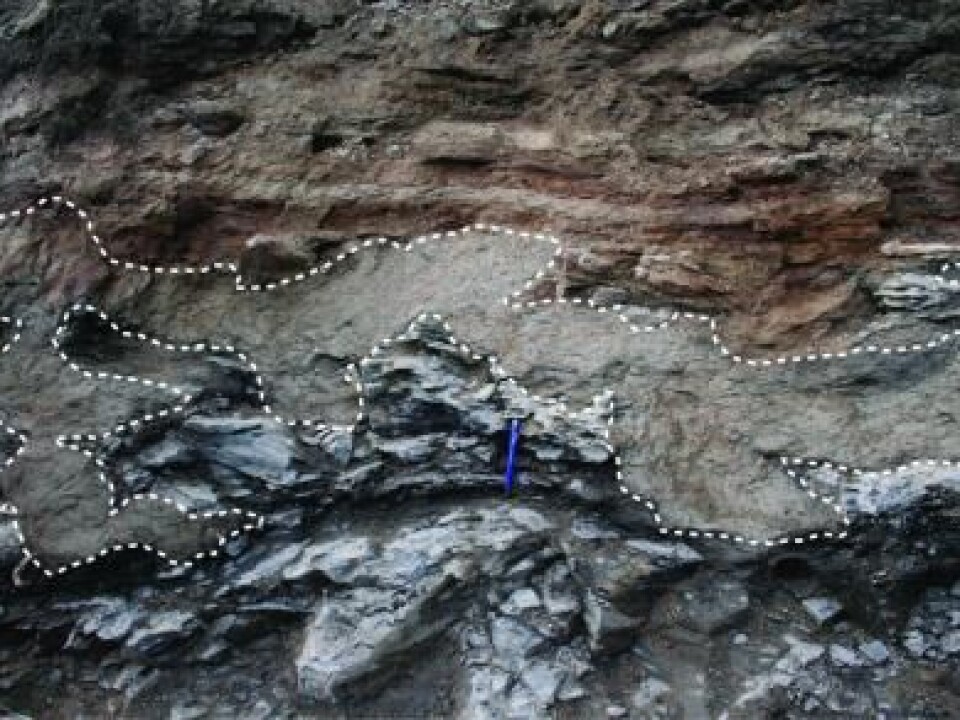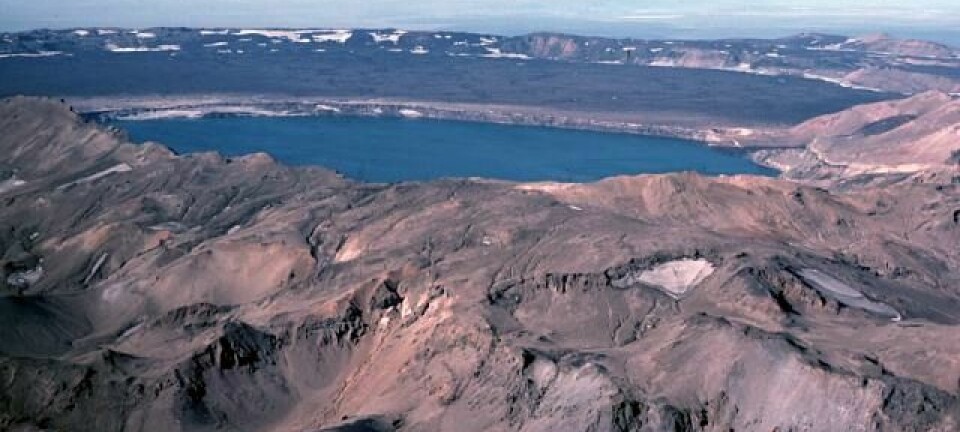
Mega volcanoes caused earthquakes in the UK and Denmark
Geologists used to think that a massive meteorite strike 201 million years ago had left its mark in rock formations in England but new research points to extreme volcanic eruptions as the actual culprit.
In the rocks beneath England, geologists have found evidence of a tremendous earthquake that took place 201 million years ago.
About the same time, a meteorite crashed into what is now modern day France, leading many researchers to suppose that this meteorite impact had left some tell-tale traces in the rock formations in England.
New research, however, has delivered a blow to this theory. The researchers discovered that earthquakes in England not only shook the British Isles but also extended throughout large parts of Europe.
"We've examined rock formations in Denmark and several other countries, and we've discovered evidence of the same earthquakes that we have seen in England. We believe that it was a huge volcanic area that triggered earthquakes across much of Europe," says senior researcher Sofie Lindström, who is lead author of the new study published in Geology.
Meteorite theory knocked on the head

Michael Simms, an Irish geologist, was the first to map the ancient earthquakes.
Simms suggested back in 2007 that the earthquakes may have been caused by a meteor impact. The suggestion was supported a few years later, when German scientists discovered that the meteor crater in Rochechouart in France was about 201 million years old - the same age as the ancient tremors in the UK.
Despite the similarity in age, the new Danish research convincingly shows that actually, there is no connection between the Rochechouart-meteorite impact and UK earthquakes.
In Simms’s own words, the Danish study "effectively knocks the impact hypothesis on the head."

"This new research is important because it demonstrates not only that the extent of seismic shaking is far greater even than I had documented, but also that clearly it was not a single event but a series of seismic shocks at irregular intervals over many thousands of years," said Simms, who is a researcher at the department of natural sciences at Northern Ireland's National Museum.
“This effectively rules out a single epicentre (point of origin) for the earthquake and hence eliminates any possible link with the Rochechouart impact," he says.
Earthquake occurred before the extinction of dinosaurs
Whether a meteorite impact or volcanoes created the tremors in Europe, it is in many ways reminiscent of the more familiar debate about why the dinosaurs become extinct.
Scientists have long argued over whether a volcano eruption or a meteorite strike killed the dinosaurs - and both explanations could be possible.

65 million years ago, when the dinosaurs eventually met their end, the world was suffering from intense volcanic activity in India and the results of a meteorite strike in the Yucatan Peninsula in Central America.
But this new study investigates violent tremors in Europe that took place more than 100 million years before the dinosaur extinction, so these two debates should not be confused.
Researchers identified the 201 million year old seismic-patterns in rock formations in Denmark, Sweden, Germany, and Luxembourg. All of which contained exactly the same patterns, which Simms had found in the UK.
When the researchers trawled through past geological studies, they found descriptions of similar shocks in Poland, Hungary, Slovakia, Italy, and southern France.
Europe shook for 20,000 years
"We are the first to collate all of these sporadic descriptions, and in doing so we painted a picture of earthquakes affecting large parts of Europe at this time," says Lindström, a senior scientist at the Geological Survey of Denmark and Greenland (GEUS).
"We can see that the shaking occurs over a period of about 20,000 years. So they cannot have been created by a single meteorite impact," she says.
Europe looked very different at the start of this intense seismic activity. Back then, all the continents as we know them were sitting close together in one big super-continent called Pangaea. Sitting further south than they do today, Denmark and its neighbours enjoyed a hot and humid climate and large swamp forests covered much of the landscape.
As North America and North Africa began to separate from each other, a gap opened up between them. This marked the formation of a huge volcanic area, known as the Central Atlantic Magmatic Province (CAMP).
Earthquakes caused by mega-volcanic region
Although the giant volcanic area was far away from Denmark and neighbouring countries, says the Danish researchers, nevertheless volcanism here initiated the earthquakes in Europe.
Simms has read the new study, and agrees with this conclusion.
"The close correlation between the timing of these seismic shocks and the initial eruptions of the CAMP volcanics suggests a causal link, but this paper still doesn't really address the mechanism by which flood basalt volcanism might actually generate such powerful seismic shocks," says Simms.
Lindstrom points out that the CAMP volcanic region was much larger and more violent than anything that we know of today – the volcanic area covered about 11 million square kilometres and was thus the largest ever known on Earth.
"The volcanic province was located more than 2000 kilometres away from England, and therefore some researchers have questioned whether it could be these volcanoes that created the earthquakes. But this is a volcanic area, which is much, much bigger than any volcano that we know of today. There are tremendous forces at work," says Lindstrom.
She believes that the volcanic activity of CAMP was so powerful that it initiated the earthquakes 2000 km away, in Europe.
A mass extinction: 75 percent of life on Earth disappeared
Besides having kicked off earthquakes throughout Europe, scientists already knew that the CAMP-volcanic area may have led to a violent setback for much of life on Earth - a setback known as the end-Triassic mass extinction.
"It is estimated that up to 75 percent of all life on Earth were wiped out. On land, plants and trees died and forests were replaced with ferns, whilst in the oceans many animals also died," says Lindstrom.
The famous end-Triassic mass extinction coincides precisely with the violent earthquakes throughout Europe.
A popular theory is that the end-Triassic mass extinction coincided with large releases of greenhouse gases – primarily carbon dioxide (CO2) or methane – from the ferocious CAMP volcanoes.
Just as today's emissions of greenhouse gases lead to global warming, so the volcanic emissions of greenhouse gases also caused global temperatures to rise and oceans to acidify 201 million years ago.
A wide range of organisms simply could not survive these changes.
Gaps in the mass extinction theory
In the new study, the researchers note that there are big gaps in the end-Triassic mass extinction theory, including what actually caused it in the first place.
Lindström explains that there were at least four ‘pulses’ of violent volcanic activity, which lasted in total for around 620,000 years. But the extensive mass extinction occurs very early on in this period, within the first 20,000 years of the formation of the volcanic province.
"The theory doesn't explain why plants and animals recovered whilst volcanism continued and carbon dioxide was continually released over the next 600,000 years. There must have been something special at the earliest stage of volcanism, which led to the widespread mass extinction," says Lindström.
Along with her colleagues, Lindström suggests that CAMP volcanism was particularly 'bad' in its early stages.
Did poisonous sulphur gas exacerbate the mass extinction?
"We believe that the earliest stage of volcanism was particularly disruptive to life on Earth as magma from deep within the earth emerged."
"Sulphur and fluorinated gases that are toxic to animals and plants could have been released in large quantities. This could be a contributing factor to the end-Triassic mass extinction," says Lindström.
Simms is not nearly as convinced by this.
"I find this section far less convincing, since it is largely based on conjecture rather than on hard evidence like that described for the seismites (rocks deformed by earthquakes)," says Simms.
---------------
Read the original story in Danish on Videnskab.dk
Translated by: Catherine Jex
Scientific links
- 'Intense and widespread seismicity during the end-Triassic mass extinction due to emplacement of a large igneous province'', 2015, Geology
- 'Uniquely extensive seismite from the latest Triassic of the United Kingdom: Evidence for bolide impact?', Geology, 2003
- 'Uniquely extensive soft-sediment deformation in the Rhaetian of the UK: Evidence for earthquake or impact?', 2007, Palaeogeography, Palaeoclimatology, Palaeoecology
- 'A Rhaetian 40Ar/39Ar age for the Rochechouart impact structure (France) and implications for the latest Triassic sedimentary record', 2010, Meteoritics & Planetary Science









